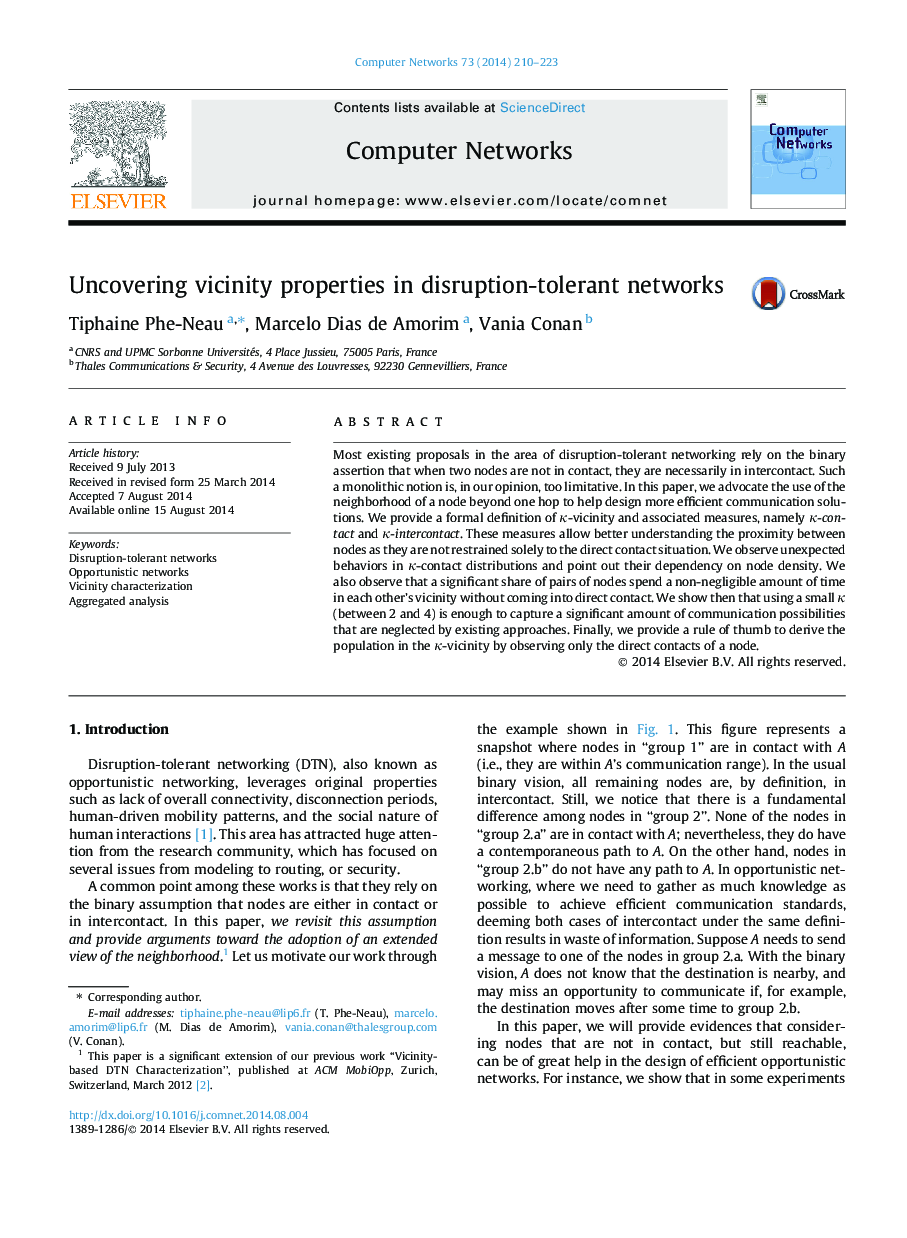| Article ID | Journal | Published Year | Pages | File Type |
|---|---|---|---|---|
| 452891 | Computer Networks | 2014 | 14 Pages |
Most existing proposals in the area of disruption-tolerant networking rely on the binary assertion that when two nodes are not in contact, they are necessarily in intercontact. Such a monolithic notion is, in our opinion, too limitative. In this paper, we advocate the use of the neighborhood of a node beyond one hop to help design more efficient communication solutions. We provide a formal definition of κκ-vicinity and associated measures, namely κκ-contact and κκ-intercontact . These measures allow better understanding the proximity between nodes as they are not restrained solely to the direct contact situation. We observe unexpected behaviors in κκ-contact distributions and point out their dependency on node density. We also observe that a significant share of pairs of nodes spend a non-negligible amount of time in each other’s vicinity without coming into direct contact. We show then that using a small κκ (between 2 and 4) is enough to capture a significant amount of communication possibilities that are neglected by existing approaches. Finally, we provide a rule of thumb to derive the population in the κκ-vicinity by observing only the direct contacts of a node.
